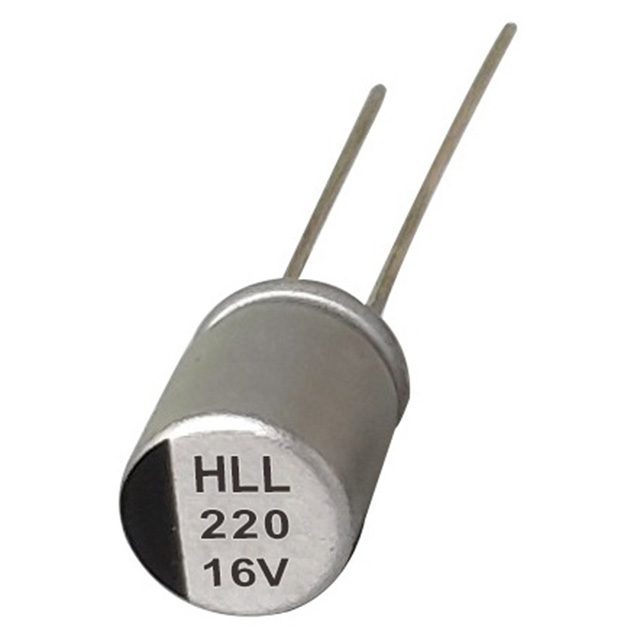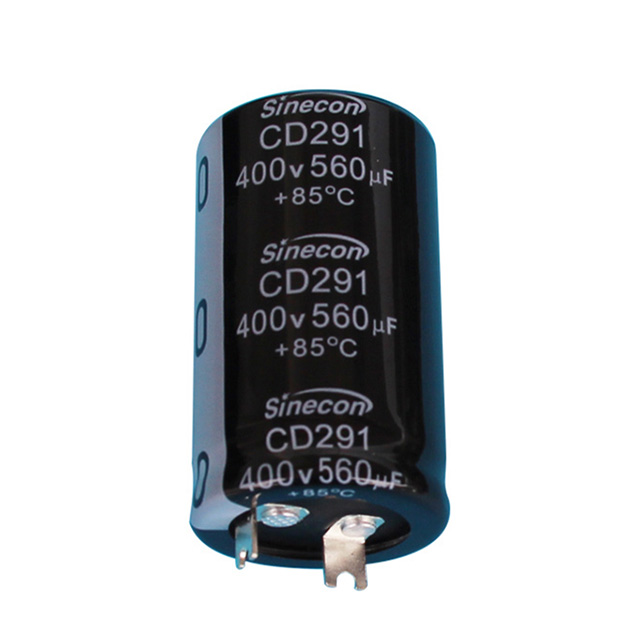Solid Polymer Capacitors utilize a chemically stable, solid conductive polymer as the electrolyte, which eliminates one of the primary vulnerabilities of conventional aluminum electrolytic capacitors: liquid-based electrolyte degradation. Traditional capacitors rely on an electrolyte that can evaporate, leak, or chemically break down when exposed to moisture. This poses reliability risks, particularly in humid or corrosive operating environments. By contrast, the solid polymer inside a Solid Polymer Capacitor is inherently non-volatile and non-evaporative, meaning it does not degrade due to exposure to moisture or air over time. This makes it highly resistant to changes in capacitance or equivalent series resistance (ESR), which would otherwise occur as the electrolyte breaks down. As there is no liquid content, the likelihood of drying out, internal arcing, or performance drift due to atmospheric moisture is virtually eliminated.
The design of Solid Polymer Capacitors includes robust encapsulation methods using high-grade resins, epoxy-based potting compounds, or molded resin bodies, which provide a critical first barrier to external moisture. In addition to these primary enclosures, manufacturers apply hermetic sealing around the base of the capacitor where lead terminations exit the body. This helps to block moisture ingress via capillary action—one of the most common routes for environmental contaminants to enter electronic components. Some designs incorporate metal canisters with laser-welded or crimp-sealed ends and may include moisture-resistant gaskets or polymer seals. This layered sealing approach ensures that even in high humidity or condensation-prone environments—such as outdoor electronics, humid climate applications, or coastal installations—the capacitor maintains its physical and electrical integrity over extended service durations.
Another layer of protection in Solid Polymer Capacitors comes from the use of corrosion-resistant internal materials. The anodes are typically made from high-purity aluminum or tantalum with oxide dielectric layers that are self-passivating. These layers prevent chemical reactions that can be triggered by trace moisture or atmospheric contaminants. The conductive polymer itself is chemically inert and has low oxygen and moisture permeability, meaning it does not contribute to internal corrosion or ion migration. Manufacturers treat the internal surfaces with anti-corrosion coatings or use oxidation-resistant polymers that remain stable in humid environments. This chemical resilience ensures that even in extended use under damp or corrosive ambient conditions, internal electrode structures will not suffer the electrochemical breakdown that can lead to performance failure or increased ESR.
Solid Polymer Capacitors are extensively tested for stability under simultaneous exposure to high humidity and elevated temperatures, in conditions like 85°C at 85% relative humidity for 1000–2000 hours. While traditional electrolytic capacitors may suffer from electrolyte vaporization, hydrolysis, or acid formation under these conditions—leading to swelling, leakage, or dielectric loss—solid polymers remain chemically stable and do not decompose into corrosive byproducts. The conductive polymer electrolyte is designed to be thermally resilient and chemically inert, resisting the formation of conductive paths or gas evolution that would compromise internal insulation or cause pressure buildup. As a result, these capacitors maintain tight electrical tolerances even when subjected to environmental extremes, making them ideal for outdoor LED drivers, power inverters, or telecom base stations deployed in tropical or subtropical climates.















